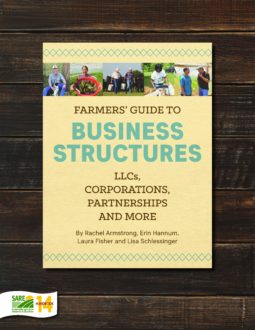This section provides an overview of the limited liability company (LLC) entity. This section offers farmers a basic understanding of what it means to run a farm operation as an LLC. The following section, Going Deeper into LLCs, gives you some tools to help you navigate the process of creating and operating an LLC. It includes a checklist for creating an LLC, two sample operating agreements and a checklist for preparing an operating agreement.
A fictitious story about three sisters who create Sun Sisters Farm, LLC is woven throughout this chapter to help explain some of the more complex legal scenarios and give you a better sense of some scenarios you should consider when forming and operating an LLC.
| At-A-Glance Chart: LLC | ||
|---|---|---|
| General Concept | Terminology | |
| LLC Specific Technology | Name | "Farm Name, LLC" |
| Owners/investors are called | "Members" | |
| Persons who make management decisions are called | “Managers” (if manager-managed); “Members” (if member-managed) | |
| Creation document is called | "Articles of organization" | |
| Organizing document is called | "Operating agreement" | |
| An owner's investment is called | "Capital contribution" | |
| An ownership share is called | "Percentage interest" | |
| A payment of the company's profits to the owners is called | Distribution | |
| Is there personal liability? | Limited to a member's capital contribution if LLC integrity is maintained | |
| How many participants can you have? | One or more; can be other business entities or trusts unless elect S corporation tax status. | |
| Are annual meetings required? | Not required, unless elect S corporation tax status | |
| Are different member classes allowed? | Allowed, unless elect S corporation tax status | |
| In an EIN necessary? | Required, unless you're a single-member LLC with no employees | |
| Who files the tax return? | Pass-through is default (members file and report LLC’s income on their tax returns); option to elect C corporation (entity files and reports LLC’s income on Form 1120) or S corporation federal tax status. | |
| LLC with S Corporation Federal Tax Status | How many participants can you have? | Maximum 100 people. Cannot be other business entities or trusts. All must be U.S. citizens. |
| Are annual meetings required? | Required | |
| Are different member classes allowed? | Not allowed | |
| Is an EIN necessary? | Required | |
| Who files the tax return? | Pass-through; but, entity must file informational Form 1120S with the IRS, distribute Schedule K-1 to each member and file all Schedule K-1s with the IRS. Each member must report their share of business’s income on their individual tax return. | |
